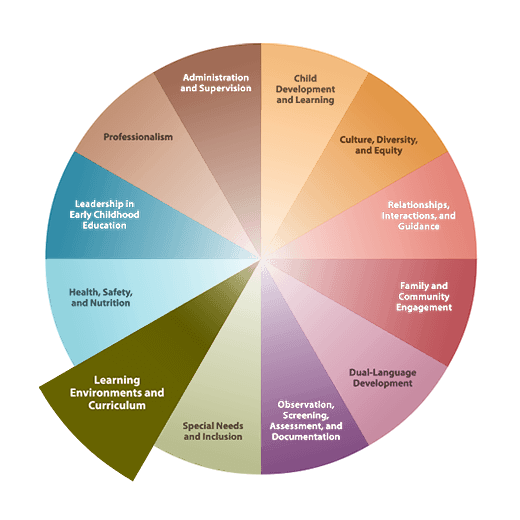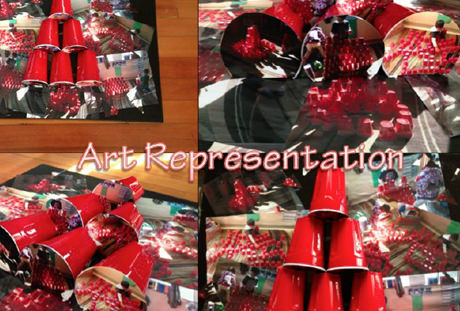This competency area focuses on the design of the early education learning environment in centers and family child care homes. It also covers the interactions and experiences that are intended to facilitate learning and development for all children. Support for children’s learning builds on their strengths, incorporates multiple approaches to learning, and reflects their cultural and linguistic experiences. In early education settings, the social–emotional climate is a critical aspect of the learning environment for children, and curriculum includes personal-care routines, consistent schedules, transitions between the home and program or from one activity to another, and the transition from infant/toddler programs to prekindergarten to kindergarten. These components do more than provide a predictable backdrop against which learning takes place; the ways in which adults structure these events and interact with children form the content of learning. Therefore, this competency area is closely linked with the Relationships, Interactions, and Guidance and the Observation, Screening, Assessment, and Documentation competency areas.
Download the California ECE Competencies
This document requires the Adobe Acrobat Reader. Download the plug-in.

Framing questions identify some of the major themes in this competency. They provide you with a starting point. As you explore this competency, add your own framing questions for issues you want to further examine.
Keep these dispositions in mind as you explore the Framing Questions. If you mindfully adopt these dispositions, you will realize the Desired Outcomes for Practitioners and for Children.
The CompSAT Keys to Reflection and Inquiry offer you a protocol to use in whatever setting you work as an early childhood educator. Learn how you can integrate the six Keys into your work. Select one of the Keys below to practice reflecting with questions related to the competency area of Learning Environments and Curriculum.

Choose from one of the Keys below to view additional information related to this Competency!

In this portfolio segment, a teacher documents, through photos and a brief anecdote, how some of the children in her preschool group used a simple, everyday object — plastic Red Cups — as the building material to create complex mazes and structures. Often times, this type of readily available and inexpensive item can be overlooked in favor of pricey items from a catalog. What's in your environment?
